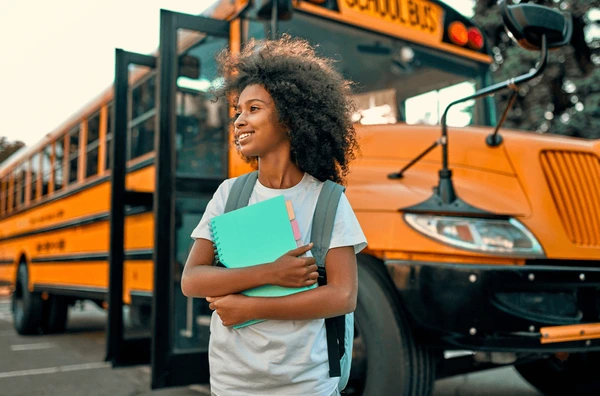In this article, we’ll break down how to create a school communications strategy that works. We’ll cover the key components, best practices, and tips for ensuring that your school’s communication efforts are efficient, transparent, and effective.
What is a School Communications Strategy?
Defining the Role of Communication in Education
A school communications strategy is a comprehensive plan that outlines how information will be shared between the various stakeholders in the school community, including students, parents, teachers, administrators, and the wider community. The strategy ensures that communication is consistent, timely, and accessible, creating a positive and transparent atmosphere within the school.
The goal of a communications strategy is not only to disseminate information but also to engage and build relationships with the school community. It helps set expectations about how and when information will be communicated, what channels will be used, and who is responsible for communication.
In my experience, an effective strategy can make all the difference in how a school is perceived by its community and how well it operates. A clear plan ensures that everyone—whether a parent, teacher, or student—knows where to turn for information and how to stay connected with the school.
Key Components of a School Communications Strategy
1. Clear Objectives and Goals
The first is creating a communications strategy is to establish clear objectives. What do you want to achieve through your school’s communication efforts? Are you focusing on improving parental involvement, enhancing student engagement, or boosting the school’s reputation within the community?
For example, a common goal might be to improve the relationship between parents and teachers. This could involve providing regular updates on student progress or offering more opportunities for parents to participate in school events. Defining the specific outcomes you want to achieve will guide your communication strategy and help measure its success.
2. Identifying Your Audience
Understanding your audience is essential when planning how to communicate effectively. The key groups within a school’s community include:
-
Students: Their needs may differ by age group, so communication strategies should be tailored accordingly. For younger students, communication might be focused on classroom activities and assignments, while older students may require more emphasis on academic progress, career opportunities, and extracurricular activities.
-
Parents: Engaging parents is crucial for student success. Effective communication with parents can include regular newsletters, parent-teacher meetings, and notifications about school events or student progress. It’s important to understand how parents prefer to receive information—whether through email, phone calls, or online platforms.
-
Staff: Teachers and administrators need clear communication about school policies, curriculum changes, professional development opportunities, and day-to-day operational matters. Open lines of communication between staff members foster collaboration and efficiency.
-
Community: The broader community can be an invaluable partner in supporting the school’s goals. Community members, local businesses, and government representatives should be informed about the school’s achievements, challenges, and needs.
Tailoring your message for each group ensures that your communication is relevant and meaningful, encouraging engagement from all stakeholders.
3. Choosing Communication Channels
The next step is deciding which channels to use for each audience. Modern communication offers a range of options, including:
-
Email: Email remains one of the most effective ways to communicate important updates, reminders, and newsletters to parents, students, and staff.
-
School Website: A school’s website can serve as a central hub for important documents, event calendars, and general information. It’s also a great place to post announcements and updates.
-
Social Media: Platforms like Facebook, Twitter, and Instagram are increasingly used by schools to share updates, celebrate achievements, and engage with the community. Social media is a great way to showcase the school’s culture and events in real-time.
-
Newsletters: Regular newsletters, whether digital or print, provide a more personal touch. They can summarize key events, highlight student achievements, and offer insights into upcoming activities.
-
Text Messaging: For more immediate communication, especially for time-sensitive updates or emergencies, text messaging can be an effective method.
The key is to use the right mix of communication channels to ensure that messages reach everyone, in the format that suits them best.
4. Timing and Frequency of Communication
Timing is an important factor in communication. An effective school communication strategy should establish how often different types of messages should be sent. Too much communication can overwhelm recipients, while too little may lead to confusion or disengagement.
For example, sending weekly or bi-weekly newsletters can be an excellent way to keep parents and staff informed. For time-sensitive updates (e.g., school closures or changes in schedules), quick text messages or social media posts may be necessary. Establishing a regular communication rhythm helps everyone stay on the same page and feel more connected to the school community.
5. Roles and Responsibilities
Assigning clear roles and responsibilities is crucial to ensuring that the communication strategy runs smoothly. In many schools, a communication coordinator or marketing team takes charge of developing and executing the communication plan. However, it’s important that everyone involved—teachers, staff, and administrators—understand their role in supporting the strategy.
For example, teachers might be responsible for communicating academic progress and student updates to parents, while administrators manage school-wide announcements. By clarifying who is responsible for what, you ensure that the right information gets to the right people at the right time.
Best Practices for School Communication
1. Be Transparent and Honest
Transparency is key to building trust within the school community knowledge. Keeping stakeholders informed about important decisions, challenges, and successes helps foster a sense of involvement and collaboration. When there’s a challenge—whether academic, financial, or operational—being upfront with staff, students, and parents builds credibility and ensures that everyone is on the same page.
2. Use Clear and Simple Language
Avoid jargon or overly complex language. Clear, simple communication ensures that messages are accessible to everyone, regardless of their background. Whether it’s a letter to parents or a student announcement, the goal should be to communicate in a way that’s easy to understand.
3. Encourage Two-Way Communication
Effective communication isn’t just about sending information; it’s also about listening. Encourage feedback from students, parents, and staff to understand their needs and concerns. Creating avenues for two-way communication, such as surveys, parent-teacher conferences, or open forums, helps the school stay responsive and connected.
4. Celebrate Successes
A great communications strategy doesn’t just focus on challenges—it also highlights achievements. Celebrating student accomplishments, staff recognition, and community involvement fosters a positive atmosphere and reinforces a sense of pride in the school.
Measuring the Effectiveness of Your Strategy
1. Collect Feedback
Regularly gathering feedback from students, parents, and staff about the communication methods and content can provide valuable insights. Use surveys or informal check-ins to gauge how well the strategy is working and where there might be room for improvement.
2. Track Engagement
Monitor the engagement levels across your communication channels. Are parents opening your emails? Are social media posts being shared? Tracking engagement helps determine which methods are most effective and whether adjustments need to be made.
3. Evaluate Impact on School Climate
A strong school communication strategy can significantly impact the school climate. If students and parents feel informed and involved, they are more likely to be engaged and satisfied with their school experience. Conducting periodic surveys on school climate can help assess the effectiveness of your communication strategy.
Overcoming Common Communication Challenges
1. Addressing Language Barriers
In schools with diverse populations, language can be a barrier to effective communication. Offering translation services or bilingual staff can help ensure that non-English-speaking families have access to important information.
2. Overcoming Technology Barriers
Not all families have access to the latest technology. To ensure equitable communication, schools should provide multiple channels, including paper newsletters or phone calls, to reach families who may not have reliable internet access.
3. Ensuring Consistency
Consistency is crucial for effective communication. Establishing guidelines and a schedule for communication ensures that information is delivered on time and doesn’t get lost in the shuffle.
Conclusion: A Communications Strategy for Success
A strong school communications strategy is essential for building an engaged, informed, and connected school community. By focusing on clear objectives, understanding your audience, choosing the right communication channels, and ensuring regular, transparent communication, you can create a strategy that supports the success of your students and enhances the overall school experience.
Whether you’re a teacher, administrator, or part of the school’s leadership team, taking the time to develop a well-thought-out communications strategy will foster stronger relationships, improve school culture, and create a more positive educational environment for everyone involved.


